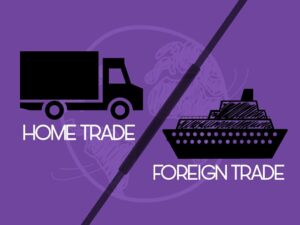Internal and International Trade
What is Internal Trade?
Internal trade refers to the exchange of goods and services within a country’s borders. It involves the buying and selling of products between individuals, businesses, or regions within the same country.
Examples of Internal Trade
1. A farmer selling his produce to a local grocery store.
2. A car manufacturer purchasing steel from a domestic supplier.
3. A retail store selling goods to local consumers.
What is International Trade?
International trade refers to the exchange of goods and services across national borders. It involves the buying and selling of products between countries, facilitated by various import and export mechanisms.
Examples of International Trade
1. A company in the United States importing clothing from China for resale.
2. An automobile manufacturer exporting vehicles to a dealership in Germany.
3. A technology company selling software licenses to customers in multiple countries.
Differences between Internal and International Trade
| Difference Area | Internal Trade | International Trade |
|---|---|---|
| Geographical Scope | Limited to the country’s borders | Crosses national borders |
| Legal Framework | Regulated by national laws | Subject to international trade agreements and treaties |
| Currency | Uses domestic currency | Requires currency exchange and conversion |
| Market Size | Relatively smaller | Access to larger global markets |
| Transportation | Usually involves shorter distances | Requires long-distance transportation, logistics, and customs clearance |
| Competition | Usually faces domestic competition | Exposure to international competitors |
| Trade Barriers | Limited to domestic regulations and tariffs | Encounters international trade barriers, such as tariffs and quotas |
| Language and Culture | Shared language and culture | Diverse languages and cultures |
| Political Considerations | Primarily influenced by domestic politics | Subject to international politics and diplomacy |
| Economic Integration | Part of national economic systems | Contributes to global economic interdependence |
Conclusion
In conclusion, internal trade refers to the exchange of goods and services within a country, while international trade involves cross-border transactions between countries. The differences between these two types of trade encompass aspects such as geographical scope, legal framework, currency, market size, transportation, competition, trade barriers, language and culture, political considerations, and economic integration. Understanding these differences is crucial for businesses and policymakers involved in both internal and international trade.
People Also Ask
1. What is the significance of internal trade?
Internal trade plays a crucial role in promoting economic growth within a country by creating job opportunities, generating tax revenue, and driving the development of domestic industries.
2. Why is international trade important?
International trade allows countries to access a wider range of goods and services, benefit from comparative advantages, foster economic growth, and promote global cooperation and peace.
3. Are there any risks associated with international trade?
Yes, international trade involves risks such as foreign exchange rate fluctuations, trade disputes, geopolitical tensions, and market volatility. However, these risks can be managed through various measures, including risk diversification and international trade agreements.
4. How does internal trade contribute to a country’s GDP?
Internal trade contributes to a country’s GDP by creating domestic demand, generating income for businesses and individuals, and stimulating economic activity across various sectors.
5. What are the barriers to international trade?
Barriers to international trade include tariffs, quotas, import restrictions, customs regulations, trade embargoes, and non-tariff barriers such as technical standards and licensing requirements imposed by countries to protect their domestic industries or for political reasons.


